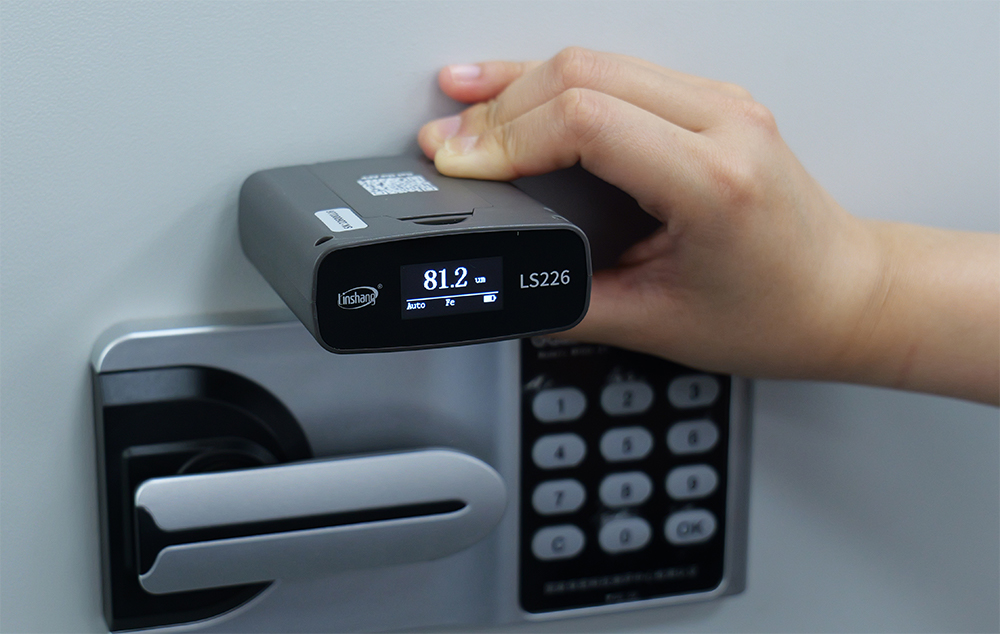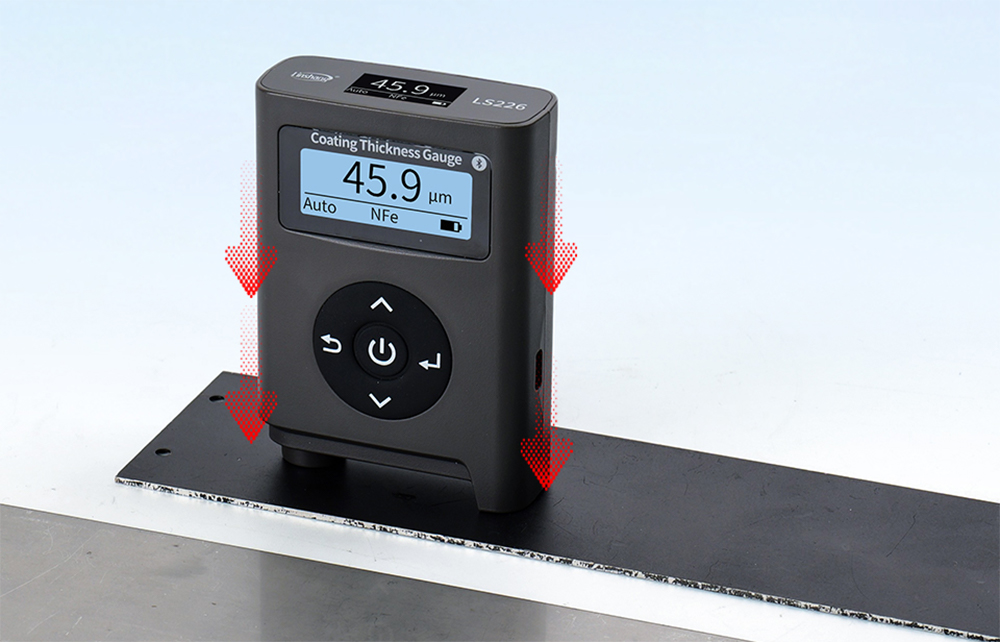Steel Plate Coating Thickness Gauge: The Best Choice for Accurate Galvanized Steel Measurement
In industries such as steel manufacturing, automotive, shipbuilding, and structural steel construction, surface coatings on steel plates—such as paint, galvanized layers, or anti-corrosion films—act as the first line of defense against corrosion. These coatings improve appearance, extend product lifespan, and ensure durability. Using steel plate coating thickness gauge accurately measuring their thickness is not a minor detail but a key factor in quality control, cost management, and compliance with standards.

Why Measure Coating Thickness on Steel Plates?
When an electrolyte connects the anode and cathode areas on the surface of steel, a galvanic cell forms, causing corrosion and rust. To prevent this, two main protective strategies are commonly used:
Cathodic protection (using sacrificial anodes)
Galvanization involves applying a zinc layer on steel components to prevent rusting.
Paint or protective films isolate steel from corrosive agents.If the coating is too thin, it can expose the steel, leading to rust. If it’s too thick, it may cause material waste, poor adhesion, or peeling. To avoid these issues, a steel plate coating thickness gauge is essential for precise and reliable coating measurements and corrosion prevention.
Types of Steel Plate Coating Thickness Gauges
Depending on the application scenario and the material, a coating thickness gauge can be classified by:
-
Measurement Principle: magnetic induction type (magnetic method), eddy current type (eddy current method), dual-purpose type (magnetic induction + eddy current).
Generally speaking, steel plate substrates are mostly ferromagnetic materials, which are suitable for magnetic induction measurement; but if it is austenitic stainless steel (such as 304, 316), it is a non-magnetic material and needs to be measured using the eddy current principle. Therefore, in order to adapt to different types of steel, it is recommended to choose a dual-purpose coating thickness gauge.
Probe Type: integrated type: the instrument and the probe are integrated, the structure is compact and easy to carry, suitable for daily and quality inspection for rapid detection; split type: the probe is separated from the host, suitable for steel plate measurement in a small space or small area.
Key Factors to Consider When Choosing a Steel Plate Coating Thickness Gauge
When selecting a suitable coating thickness tester for steel plates, consider the following:
-
Measurement Principle
Does it support both magnetic and eddy current measurements? Can it auto-detect the substrate?
-
Measuring Range
Ensure the gauge can handle your expected thickness range, e.g., 0–2000μm.
-
Precision and Resolution
Choose a high precision coating thickness gauge with an accuracy of ±(1–3%) and resolution of 0.1μm for reliable results.
-
Calibration Support
Zero and multi-point calibration options are essential for maintaining long-term accuracy.
-
Ease of Use
Look for features like auto power-off, backlight display, and data logging/storage for greater user convenience.
Linshang Solution: LS226 High Precision Coating Thickness Gauge for Steel Plates
To meet the demands of the steel industry for accurate and efficient coating thickness measurement, Linshang Technology offers the LS226 high precision coating thickness gauge—a professional-grade device ideal for ferrous and non-ferrous substrates, especially suitable as a steel plate coating thickness gauge.
Key Advantages of LS226:
-
Adaptable to Large Steel Plates
Gravity self-stabilizing structure with carbide probe ensures stable measurement.
-
Dual-Use for Ferrous/Non-Ferrous
Integrated magnetic induction and eddy current, auto substrate recognition.
-
Dual Display Screens
Front and top screens for quick reading from any angle.
-
Measures Ultra-Thin Substrates
Minimum measurable thickness: Fe: 0.2mm / NFe: 0.05mm.
-
High Accuracy with Certification
±(2%H + 1μm) accuracy, certified by metrology authorities.
-
Bluetooth Function
View, store, and export data via app connection.
-
Supports Multi-Point Calibration
Zero and 1–5 point calibration for complex environments.

LS226 coating thickness gauge relies on its own weight to measure stably

LS226 coating thickness gauge dual display design
Conclusion
Accurate coating thickness measurement on steel plates is essential for ensuring corrosion resistance, reducing coating material waste, and enhancing overall quality control. A reliable steel plate coating thickness gauge makes all the difference.
With its dual-sensing technology, precise measurements, and user-friendly design, the Linshang LS226 high precision coating thickness gauge has become a trusted solution for industrial users. If you're looking for a dependable, efficient, and smart tool for coating thickness testing on steel plates, LS226 is your ideal choice.
- The Function of UV Energy Meter
- Application of fabric colorimeter in fabric industry
- Gloss Tester | Why is the Metal Surface Gloss Very High?
- Factors Affecting Powder Coating Gloss and Its Measurement
- Coating Thickness Gauge Test Anti-corrosive Coating
- Vacuum Online Light Transmittance Meter in Gold Foil Industry